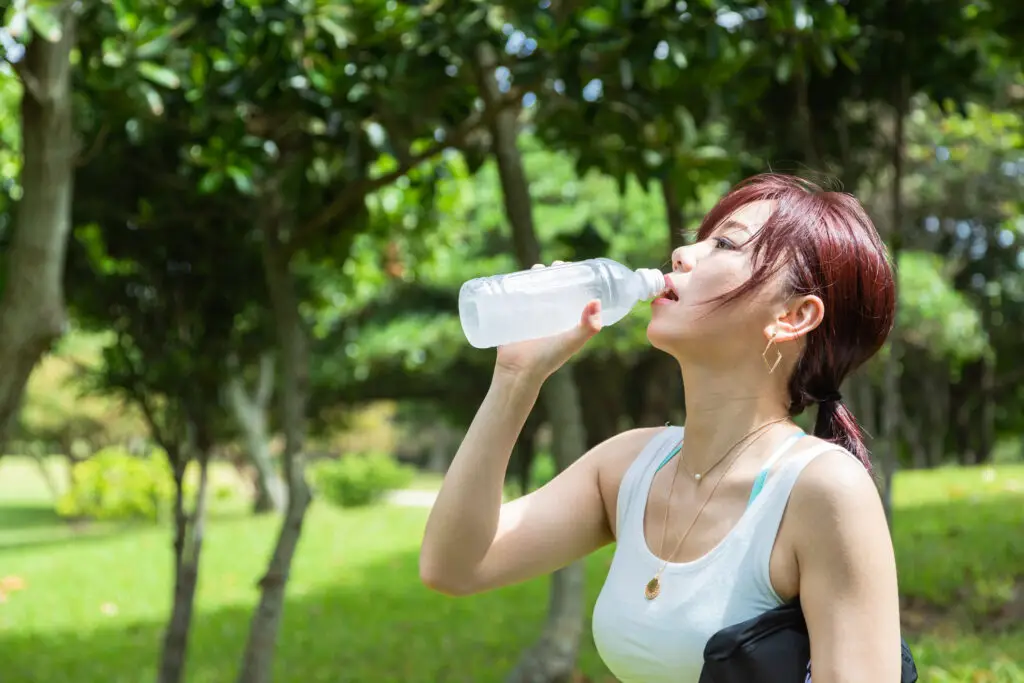Many of us are enjoying the warm weather for the month of July, however, the heat can become dangerous to your health, if you don’t take the proper precautions. Heat stroke is a condition caused by your body overheating, usually as a result of prolonged exposure to or physical exertion in high temperatures.
This most serious form of heat injury, heat stroke can occur if your body temperature rises to 104 degrees (F) or higher. Heat stroke is a medical emergency and continues to be one of the leading concerns in warmer climates.
What are risk factors?
- Age. Your ability to cope with extreme heat depends on the strength of your central nervous system. In the very young, the central nervous system is not fully developed, and in adults over 65, the central nervous system begins to deteriorate. An unstable central nervous system makes your body less able to cope with changes in body temperature. Both age groups usually have difficulty remaining hydrated, which also increases risk.
- Exertion in hot weather. Military training and participating in sports, such as soccer, running marathons and football, in hot weather are the situations that can lead to heatstroke.
- Sudden exposure to hot weather. You may be more susceptible to heat-related illness if you’re exposed to a sudden increase in temperatures, such as during an early-summer heat wave or travel to a hotter climate. Avoid vigorous outdoor activity for at least several days to allow yourself to acclimate to the change. However, you may still have an increased risk of heatstroke until you’ve experienced several weeks of higher temperatures.
- A lack of air conditioning. Fans may make you feel better, but during sustained hot weather, air conditioning is the most effective way to cool down and lower humidity.
- Certain medications. Some medications affect your body’s ability to stay hydrated and respond to heat. Be especially careful in hot weather if you take medications that narrow your blood vessels (vasoconstrictors) regulate your blood pressure by blocking adrenaline (beta blockers), rid your body of sodium and water (diuretics), or reduce psychiatric symptoms (antidepressants or antipsychotics). Stimulants for attention-deficit/hyperactivity disorder (ADHD) also make you more vulnerable to heatstroke.
- Certain health conditions. Certain chronic illnesses, such as heart or lung disease, might increase your risk of heatstroke. Obesity, being sedentary and having a history of previously being diagnosed with heat stroke can also put you at a risk of incurring heat stroke.
- Wearing excess clothing. Wearing excess clothing prevents sweat from evaporating easily and cooling your body, trapping in the heat.
- Drinking alcohol. Alcohol is known to slow bodily functions and can affect your body’s ability to regulate your temperature.
- Becoming dehydrated. By not drinking enough water, your body will become dehydrated faster in warm weather. You sweat in warmer climates, but without proper water intake, there isn’t enough to replace fluids lost through sweating.
- Sitting in a parked car. In warm weather, your car allows the hot sun in through the windows and traps the heat. On a mild day at 73 degrees (F) outside, a car can heat up to 100 degrees in ten minutes and to 120 degrees (F) in just 30 minutes. At 90 degrees (F) outside, the interior of a vehicle can heat up to 160 degrees (F) within several minutes.
How to Treat?
Once heat stroke is suspected, call 9-1-1 immediately. While waiting for ambulatory services, cooling must begin immediately and must be continued during the patient’s resuscitation. The American College of Sports Medicine recommends that cooling should be initiated at the scene, before transporting the patient to an emergency department for further evaluation and treatment. Untreated heat stroke can quickly damage your brain, heart, kidneys, and muscles.
The damage worsens the longer treatment is delayed, increasing your risk of serious complications. Home treatment isn’t sufficient for heatstroke. Whoever is with you should take steps to cool you off while waiting for emergency help to arrive.If you notice signs of heat-related illness, lower your body temperature and prevent your condition from progressing to heat stroke. In a lesser heat emergency, such as heat cramps or heat exhaustion, the following steps may lower your body temperature:
- Get to a shady or air-conditioned place. If you don’t have air conditioning at home, go someplace with air conditioning, such as the mall, movie theater or public library.
- Cool off with damp sheets and a fan. If you’re with someone who’s experiencing heat-related symptoms, cool the person by covering him or her with damp sheets or by spraying with cool water. Direct air onto the person with a fan.
- Take a cool shower or bath. If you’re outdoors and not near shelter from the heat, soaking in a cool pond or stream can help bring your temperature down.
- Rehydrate. Drink plenty of fluids. Also, because you lose salt through sweating, you can replenish salt and water with some sports drinks. If your doctor has restricted your fluid or salt intake, check with him or her to see how much you should drink and whether you should replace salt.
- Don’t drink sugary or alcoholic beverages to rehydrate. These drinks may interfere with your body’s ability to control your temperature. Also, very cold drinks can cause stomach cramps.
SportsCare Physical Therapy would like to encourage a safe and active lifestyle. Please be aware of your environment, keep hydrated, and dress in appropriate attire to help avoid heat-related illness.


